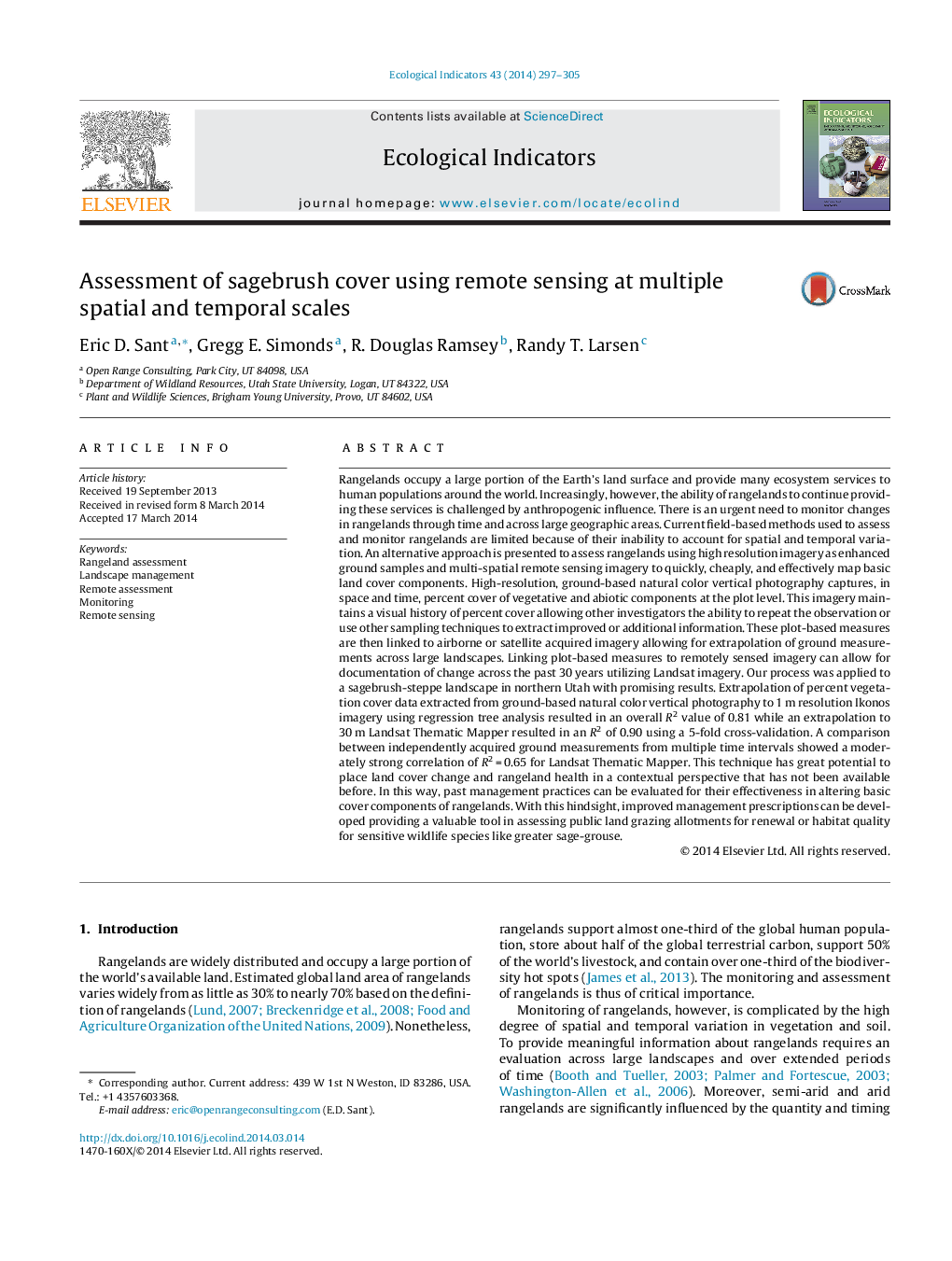| Article ID | Journal | Published Year | Pages | File Type |
|---|---|---|---|---|
| 4373183 | Ecological Indicators | 2014 | 9 Pages |
•There is a need for improved monitoring of rangelands through time and across large spatial extents.•The authors demonstrate the functionality of using multiple scales of remotely sensed imagery to address this need.•Imagery collected at different spatial scales was highly correlated with R2 values ranging from 0.65 to 0.84.•High correlation across scales allowed us to accurately assess functional components of rangeland vegetation across time using historical imagery.
Rangelands occupy a large portion of the Earth's land surface and provide many ecosystem services to human populations around the world. Increasingly, however, the ability of rangelands to continue providing these services is challenged by anthropogenic influence. There is an urgent need to monitor changes in rangelands through time and across large geographic areas. Current field-based methods used to assess and monitor rangelands are limited because of their inability to account for spatial and temporal variation. An alternative approach is presented to assess rangelands using high resolution imagery as enhanced ground samples and multi-spatial remote sensing imagery to quickly, cheaply, and effectively map basic land cover components. High-resolution, ground-based natural color vertical photography captures, in space and time, percent cover of vegetative and abiotic components at the plot level. This imagery maintains a visual history of percent cover allowing other investigators the ability to repeat the observation or use other sampling techniques to extract improved or additional information. These plot-based measures are then linked to airborne or satellite acquired imagery allowing for extrapolation of ground measurements across large landscapes. Linking plot-based measures to remotely sensed imagery can allow for documentation of change across the past 30 years utilizing Landsat imagery. Our process was applied to a sagebrush-steppe landscape in northern Utah with promising results. Extrapolation of percent vegetation cover data extracted from ground-based natural color vertical photography to 1 m resolution Ikonos imagery using regression tree analysis resulted in an overall R2 value of 0.81 while an extrapolation to 30 m Landsat Thematic Mapper resulted in an R2 of 0.90 using a 5-fold cross-validation. A comparison between independently acquired ground measurements from multiple time intervals showed a moderately strong correlation of R2 = 0.65 for Landsat Thematic Mapper. This technique has great potential to place land cover change and rangeland health in a contextual perspective that has not been available before. In this way, past management practices can be evaluated for their effectiveness in altering basic cover components of rangelands. With this hindsight, improved management prescriptions can be developed providing a valuable tool in assessing public land grazing allotments for renewal or habitat quality for sensitive wildlife species like greater sage-grouse.
